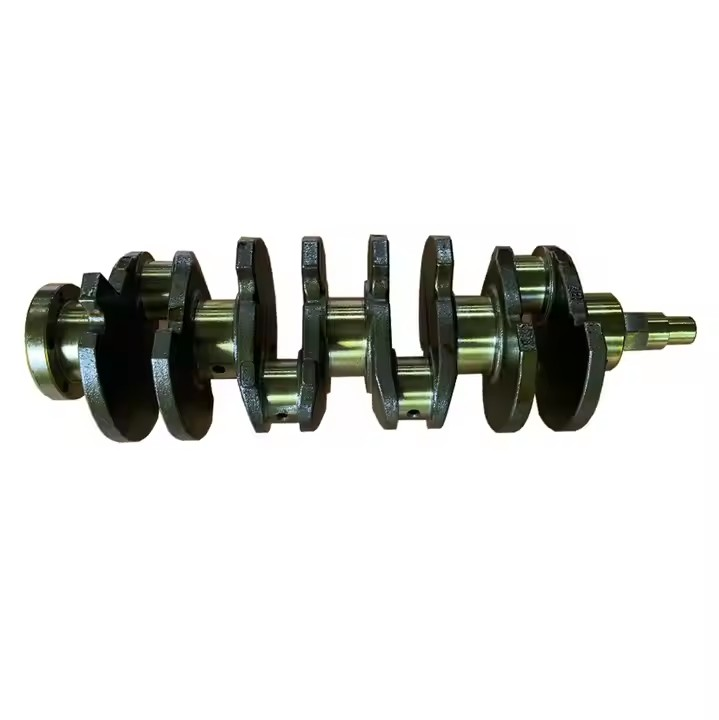Material Advancements in Crankshafts
Early crankshafts were primarily made from forged steel, but Toyota, like other automotive manufacturers, has explored and implemented various material innovations to enhance durability and reduce weight. High-strength alloy steels became increasingly common, offering improved fatigue resistance and the ability to withstand higher combustion pressures. This shift enabled the creation of lighter and more compact engines without sacrificing reliability. Furthermore, there’s been increasing interest in exploring alternative materials and manufacturing processes, such as compacted graphite iron (CGI) for certain applications. CGI offers a good balance of strength, damping capacity, and cost-effectiveness. It’s worth noting that the choice of material depends heavily on the specific engine application, its power output, and its intended lifespan. Toyota's material choices directly influence their vehicles' reliability.Design Optimization for Enhanced Performance
Beyond materials, the design of the crankshaft itself has undergone significant optimization. Finite Element Analysis (FEA) has played a crucial role in identifying areas of stress concentration and optimizing the crankshaft's geometry to minimize stress and improve overall strength. Toyota's engineers have used FEA to fine-tune the shape of the crankshaft journals, counterweights, and connecting rod journals, leading to more efficient and durable designs. For example, optimizing the counterweight design can reduce vibrations and improve engine smoothness, contributing to a more refined driving experience. These improvements also directly translate to improvements in fuel economy. Frankly speaking, the level of detail considered in modern crankshaft design is astounding.Manufacturing Innovations and Precision
The manufacturing processes involved in producing crankshafts have also seen considerable innovation. Precision forging techniques, coupled with advanced machining processes, ensure that crankshafts are manufactured to extremely tight tolerances. This precision is crucial for maintaining proper engine balance and minimizing vibrations. Toyota has invested heavily in advanced manufacturing technologies, such as CNC machining and automated inspection systems, to ensure consistent quality and performance. Additionally, surface hardening treatments, such as nitriding and shot peening, are often applied to further enhance the crankshaft's fatigue resistance. The precision within Toyota’s manufacturing process is integral to their highly regarded reputation for durability.Reducing Friction and Enhancing Efficiency
Reducing friction within the engine is a key objective for any automotive manufacturer, and the crankshaft is a significant contributor to frictional losses. Toyota has implemented various strategies to minimize friction in crankshaft design, including optimizing journal surface finish and using low-friction coatings. Polishing the journal surfaces to a mirror-like finish reduces friction between the crankshaft and the bearings. Furthermore, applying coatings such as Diamond-Like Carbon (DLC) can further reduce friction and improve wear resistance. These small changes, when accumulated, can have a noticeable impact on fuel efficiency and overall engine performance.Balancing and Vibration Dampening
Engine balance is paramount for smooth operation and longevity, and the crankshaft plays a central role in achieving this balance. Toyota employs sophisticated balancing techniques to ensure that crankshafts are dynamically balanced, minimizing vibrations and reducing stress on engine components. This involves precisely adding or removing material from the counterweights to achieve optimal balance. Furthermore, torsional vibration dampers are often incorporated into the crankshaft design to absorb torsional vibrations, which can cause engine noise and reduce component life. These dampers typically consist of a weighted ring attached to the crankshaft via a rubber or elastomeric element.Application in Hybrid and Electric Vehicles
While the focus here is on internal combustion engines, it's important to acknowledge the role of crankshaft technology in hybrid vehicles. Even in hybrid systems, the internal combustion engine often serves as a primary or secondary power source. Therefore, improvements in crankshaft design directly translate to improved efficiency and reduced emissions in these applications as well. Interestingly enough, some advanced hybrid systems utilize Atkinson cycle engines, which often incorporate specific crankshaft designs to optimize engine efficiency at the expense of power density. These modifications help improve the overall fuel economy of the hybrid vehicle.The Future of Crankshaft Design
The future of crankshaft design will likely be driven by the continued pursuit of lighter, stronger, and more efficient engines. Advances in materials science will likely lead to the development of even stronger and lighter crankshaft materials, enabling higher engine speeds and power outputs. Additive manufacturing, or 3D printing, may also play a role in the future, allowing for the creation of complex crankshaft geometries that are impossible to achieve with traditional manufacturing techniques. It's worth noting that the increasing adoption of electric vehicles may eventually reduce the demand for crankshafts, but internal combustion engines will likely remain a significant part of the automotive landscape for many years to come. In my experience, the innovations in crankshaft design will continue for the foreseeable future. The innovations we've discussed, from material science advancements to design optimizations and manufacturing precision, all converge on a single goal: to maximize engine performance and efficiency. Our company recognizes the critical role of each component in an engine's success. We can assist in analyzing the efficiency of the crankshaft by providing precise measurement tools and technologies such as vibration analysis equipment, hardness testers for determining material strength and durability, and surface finish analyzers for evaluating frictional properties. These tools and techniques help identify potential issues early in the design or manufacturing process, reducing costs and improving the reliability of the final product. Why is this approach so effective? Because it's proactive, data-driven, and focused on delivering tangible results. We’re dedicated to providing solutions that empower manufacturers to optimize their designs and processes, helping them stay ahead in a rapidly evolving industry. Ultimately, the evolution of Toyota crankshaft design from 1990 to 2023 reflects a continuous commitment to innovation and improvement. By pushing the boundaries of materials, design, and manufacturing, Toyota has consistently delivered engines that are more efficient, more durable, and more enjoyable to drive. These advancements not only enhance the performance of Toyota vehicles but also contribute to a more sustainable future for the automotive industry as a whole.For more detailed information, please visit our official website: https://www.obfe.cn




